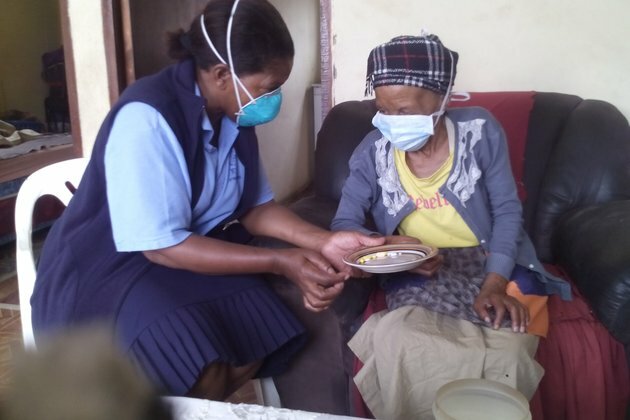Rebuilding health systems from the bottom up: a South African case study
The Conversation
11 Sep 2019, 20:04 GMT+10

The recent publication of the National Health Insurance Bill in South Africa has provoked vigorous debate. Many question whether the proposed reforms contained in the Bill offer meaningful solutions to the well-documented crisis in South Africa's health system.
This crisis is two-fold. On the one hand is the lack of access and poor quality in the public health system which serves around 85% of the population. On the other hand is an expensive and inefficient private health sector for the remaining minority. There are massive inequities in the distribution of resources between the two sectors.
There is widespread recognition that health system legislation alone will not address the deep seated problems in both sectors. Top-down reforms like those proposed in the NHI Bill need to be complemented by a bottom-up process of strengthening health systems. This must be focused on the most decentralised level of the health system, the district health system. South Africa's public health system is organised into 52 health districts.
My colleagues and I at the University of the Western Cape believe that this sort of strengthening is not only possible - it's already happening in pockets. We have engaged with district, provincial and national government players to document the potential of such bottom-up initiatives.
Our recently published research showed how coordinated action by local, provincial and national government players, working with existing resources, can create a fairly rapid turn-around in the performance of health districts. The case study we focused on could provide valuable lessons as South Africa prepares to introduce the NHI.
Gert Sibande District
Gert Sibande is a health district in the largely rural province of Mpumalanga. In 2014, this district had the highest death rate from severe acute malnutrition in the country: 28% of children younger than five who were admitted to hospital with the condition died during their stay.
But there was a dramatic decline in deaths in Gert Sibande over the three years that followed. The number of children who died from severe acute malnutrition dropped to one-third of the previous levels 9%. This decline in deaths was associated with a 59% drop in admissions.
In other words, children with severe acute malnutrition weren't only receiving more effective treatment, cases were being prevented from occurring in the first place.
Severe malnutrition has been a major contributor to child deaths in South Africa, along with causes such as pneumonia and diarrhoea. Despite South Africa's wealth, child malnutrition remains unacceptably high. Addressing this is a national priority.
Our research team conducted in-depth interviews with healthcare providers and their managers, to identify how the rapid improvements in acute malnutrition outcomes in Gert Sibande District were made possible.
Interviewees reported widespread shifts in mindsets and practices over the three years. These included improved quality of hospital care for children with severe acute malnutrition and more rigorous identification of children at risk of malnutrition in primary health care facilities. Better referral systems and household follow-up of children by community health workers were also key.
We were particularly interested in understanding how these shifts were triggered in a public health system that is frequently regarded as being trapped in a culture of poor performance and low accountability.
Key health system interventions
Changes were initially prompted by consensus in Gert Sibande District that there was a problem to be addressed. This was followed by a series of health system strengthening interventions. These included:
the appointment of a recently retired, senior public sector manager from another province to visit the district once a month;
a system of reporting deaths to senior district clinicians and programme managers within 24-hours;
regular processes of problem analysis and response in district and sub-district structures involving managers, clinicians and information officers;
empowering dietitians, who were previously marginal actors, to play a central role in steering the response;
a system of reciprocal accountability where expectations of performance were matched by the provision of support and resources;
improved supply chains through the provincial office; and,
building capacity for connected systems thinking.
Apart from the appointment of the part-time facilitator, no external donor resources were sourced or deployed to the district.
We characterised these interventions as producing three kinds of system-level change. One was "ways of thinking" (knowledge and the use of evidence). The second was "ways of governing" (leadership, participation and coordination). The third was "ways of resourcing" (inputs and capacity).
Way forward
The experience of Gert Sibande District is not unusual. There are several "pockets of effectiveness" in South Africa's public health system. This points to the latent capabilities available in this system.
We believe that unlocking this latent capability needs the kind of deliberate actions seen in Gert Sibande. The system-level changes and health outcomes achieved through such actions will, in turn, only be sustainable in the long run if they are enabled by higher levels of the system.
This entails, firstly, a recognition that change at the frontline won't be engineered by a stroke of the legislative pen. Meaningful change requires systematic approaches to strengthening, working directly at base of the health system. Gert Sibande's experience suggests that this does not necessarily have to cost more.
Secondly, national leaders are the best placed to steer a wider consensus on the need to separate political from administrative decision-making in the health system, especially at provincial level. Meritocratic appointment of district and provincial managers, accompanied by more decentralised decision-making on appointments of staff and use of funds, would be an important first step.
A third supportive action would be to invest heavily in developing distributed leadership and management capacity, oriented to public value, as part of a reinvigorated focus on human resources for health.
These approaches could lay the groundwork for a successful NHI that genuinely addresses systemic problems from the bottom up rather than imposing solutions from the top down.
Maria van der Merwe and Beauty Marutla from the Mpumalanga department of health, and Joey Cupido and Shuaib Kauchali from the National department of health contributed to this article.
Author: Helen Schneider - Professor, University of the Western Cape 
 Share
Share
 Tweet
Tweet
 Share
Share
 Flip
Flip
 Email
Email
Watch latest videos
Subscribe and Follow
Get a daily dose of Africa Leader news through our daily email, its complimentary and keeps you fully up to date with world and business news as well.
News RELEASES
Publish news of your business, community or sports group, personnel appointments, major event and more by submitting a news release to Africa Leader.
More InformationInternational
SectionGaza War sucking life out of an Israeli generation
In the past month alone, 23 Israeli soldiers have been killed in Gaza—three more than the number of remaining living hostages held...
Faulty IT system at heart of UK Post Office scandal, says report
LONDON, U.K.: At least 13 people are believed to have taken their own lives as a result of the U.K.'s Post Office scandal, in which...
Travelers can now keep shoes on at TSA checkpoints
WASHINGTON, D.C.: Travelers at U.S. airports will no longer need to remove their shoes during security screenings, Department of Homeland...
Rubio impersonator used AI to reach officials via Signal: cable
WASHINGTON, D.C.: An elaborate impersonation scheme involving artificial intelligence targeted senior U.S. and foreign officials in...
Warsaw responds to migration pressure with new border controls
SLUBICE, Poland: Poland reinstated border controls with Germany and Lithuania on July 7, following Germany's earlier reintroduction...
Deadly July 4 flash floods renew alarm over NWS staffing shortages
WASHINGTON, D.C.: After months of warnings from former federal officials and weather experts, the deadly flash floods that struck the...
Business
SectionFTC’s rule to ease subscription cancellations struck down by court
WASHINGTON, D.C.: A federal rule designed to make it easier for Americans to cancel subscriptions has been blocked by a U.S. appeals...
Musk’s X loses CEO Linda Yaccarino amid AI backlash, ad woes
BASTROP, Texas: In a surprising turn at Elon Musk's X platform, CEO Linda Yaccarino announced she is stepping down, just months after...
Ex-UK PM Sunak takes advisory role at Goldman Sachs
NEW YORK CITY, New York: Former British prime minister Rishi Sunak will return to Goldman Sachs in an advisory role, the Wall Street...
Gold ETF inflows hit 5-year high as tariffs drive safe-haven bets
LONDON, U.K.: Physically backed gold exchange-traded funds recorded their most significant semi-annual inflow since the first half...
PwC: Copper shortages may disrupt 32 percent of chip output by 2035
AMSTERDAM, Netherlands: Some 32 percent of global semiconductor production could face climate change-related copper supply disruptions...
U.S. stocks recover after Trump-tariffs-induced slump
NEW YORK, New York - U.S. stocks rebounded Tuesday with all the major indices gaining ground. Markets in the UK, Europe and Canada...













